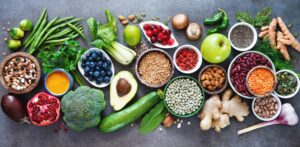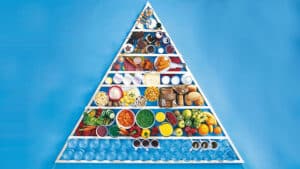No food brings together in it all the nutrients essential to the functioning of the body. Proteins, carbohydrates, fiber, fats, minerals, micronutrients… So many elements that contribute to the proper functioning of the body and the good health of man. This is why a balanced diet is essential, as it provides all the nutrients to the body. But how to adopt a balanced diet ? What foods to choose to balance your meals without it turning into a headache? Here are some answers.
Au sommaire
ToggleWhat is a balanced diet?

Balancing your meals may seem tedious at first glance, but this process is not that complicated. Above all, know that the balanced diet is not necessarily done on each meal, but rather on the day or the week. Thus, it is quite possible thanks to good nutrition to balance your meals by respecting a few principles and varying as much as possible the ingredients of the meals.
The different types of meals
Before you even think about what you eat, it is essential to know how to eat it well! The first rule of the balanced diet therefore requires 3 or 4 meals a day, without skipping any.
Breakfast
This is the first meal of the day, but also the most important. Ideally providing a quarter of the energy intake of the day, breakfast generally consists of a hot and sugar-free drink (coffee, tea …), a food rich in protein (egg, red meat, wholemeal bread …), a fresh fruit (orange, dried fruits, banana …) and a dairy product (yogurt, cheese…).
Lunch
Taken at midday, lunch is a complete meal that rather covers the three main food groups: protein, carbohydrates and vegetables. Be careful, this meal should not be too light because it is he who will provide a quarter of the energy intake of the day, especially for the afternoon. Ideally, lunch should start with raw vegetables and then continue with lean meat and starchy foods as a main course. For those who love desserts, we are satisfied with a seasonal fruit or a dairy product.
Snack
If the snack is not really an obligatory meal, it nevertheless limits snacks in the afternoon and gives a feeling of satiation at dinner. Of course, this small snack should be light and provide less than 20% of the caloric intake of the day. Its ideal content should consist of a hot drink, fruit, wholemeal bread and a few cereal bars.
Dinner
Taken shortly after 5 p.m., dinner is a light meal that provides 20% of the day's caloric intake, in order to promote sleep and digestion. Where the lunch meal includes meat, the dinner will consist of fish, so that these two meals can complement each other.
The food pyramid to balance your meals

According to the content of the food pyramid, this gives in the day:
– unlimited water (at least 1.5 liters of water and non-caloric drinks, to be distributed during and between meals);
– starchy foods during all meals (cereals, cereal products, pulses, potatoes, etc.) ;
– 5 fruits and vegetables (at least 400 grams to be consumed in various forms at each meal);
– meat, fish and eggs, 3 times a week maximum and in quantities lower than starchy foods and vegetables; prefer lean meat;
– dairy products to vary at each meal, alternating between milk, cheese and yogurt in order to obtain a good proportion between fat, protein and calcium;
– a little fat, varying the sources (oil, butter …) ;
– a smaller amount of sweet products, all of which are caloric by combining sugars and fats;
– finally, alcoholic beverages, which are to be consumed in great moderation, knowing that alcohol is the only optional food for the body.
Also read:
